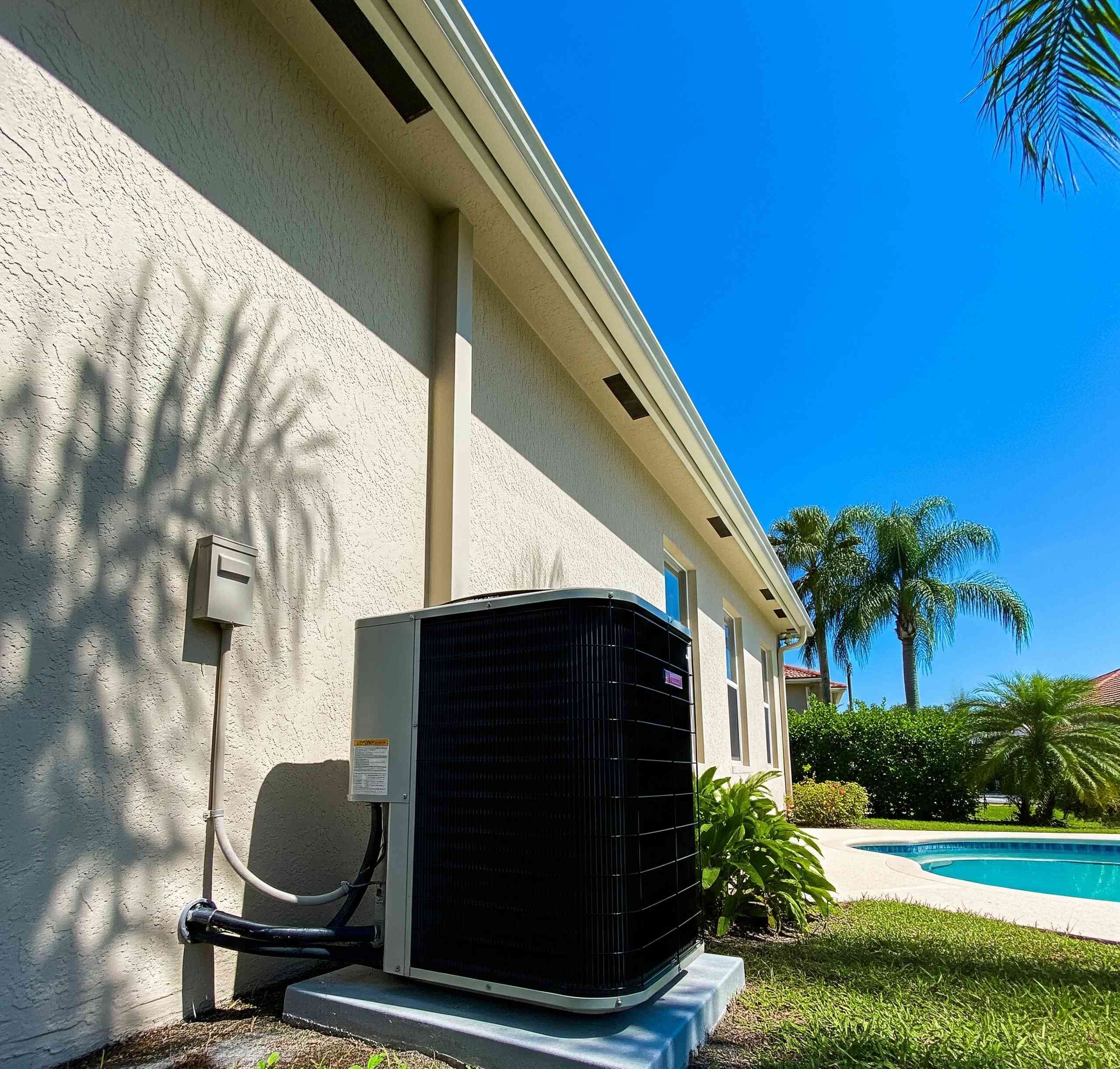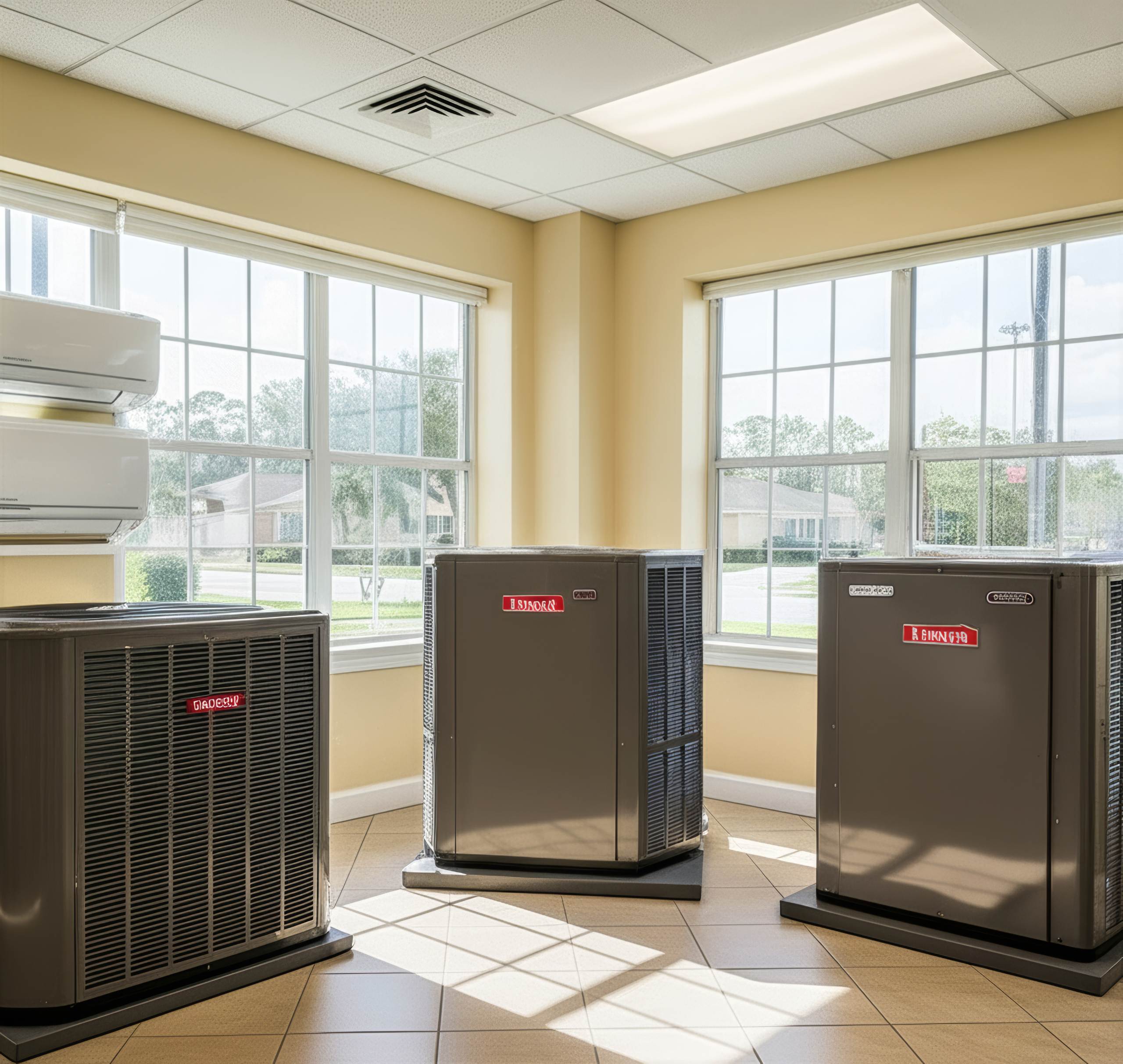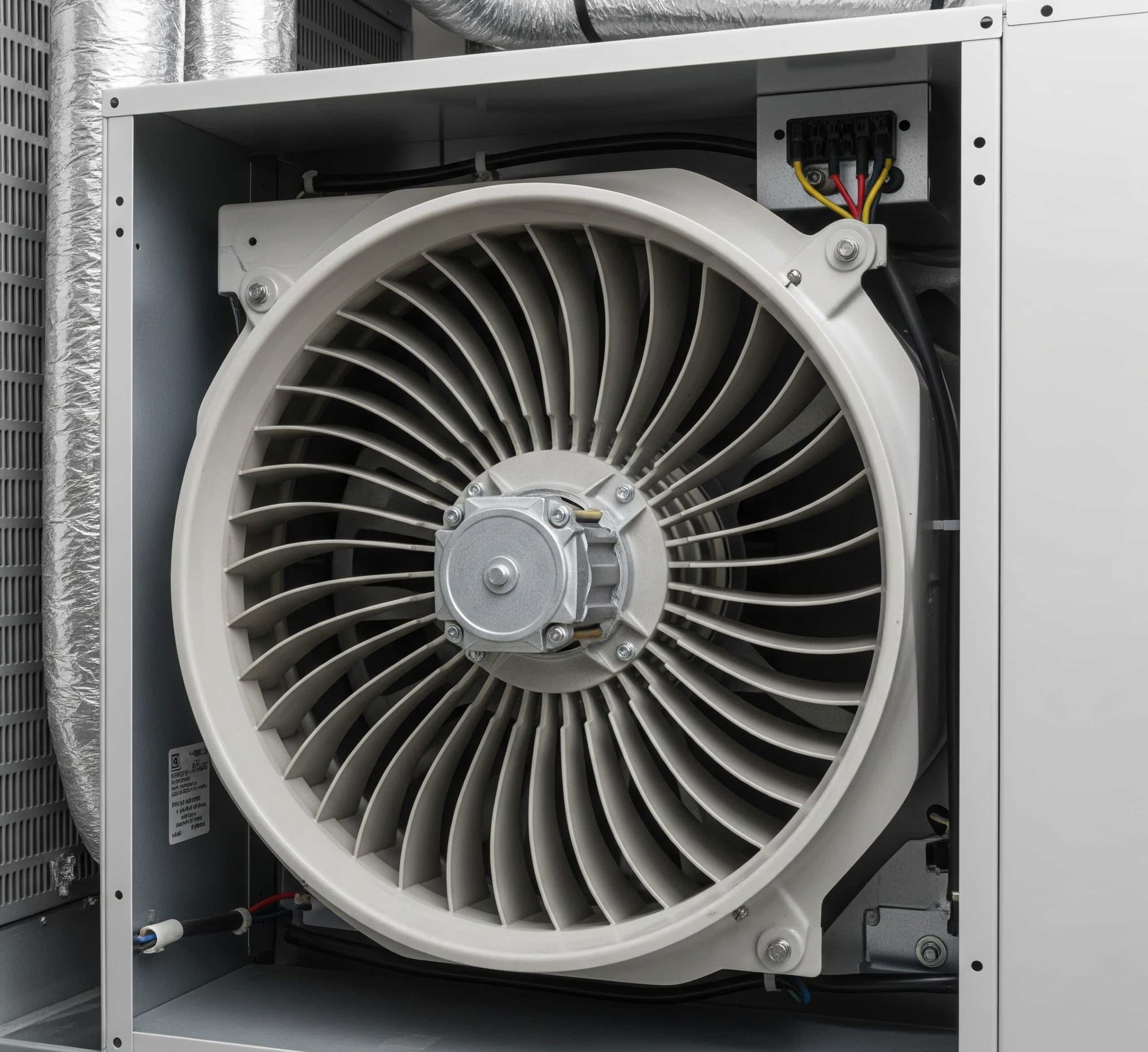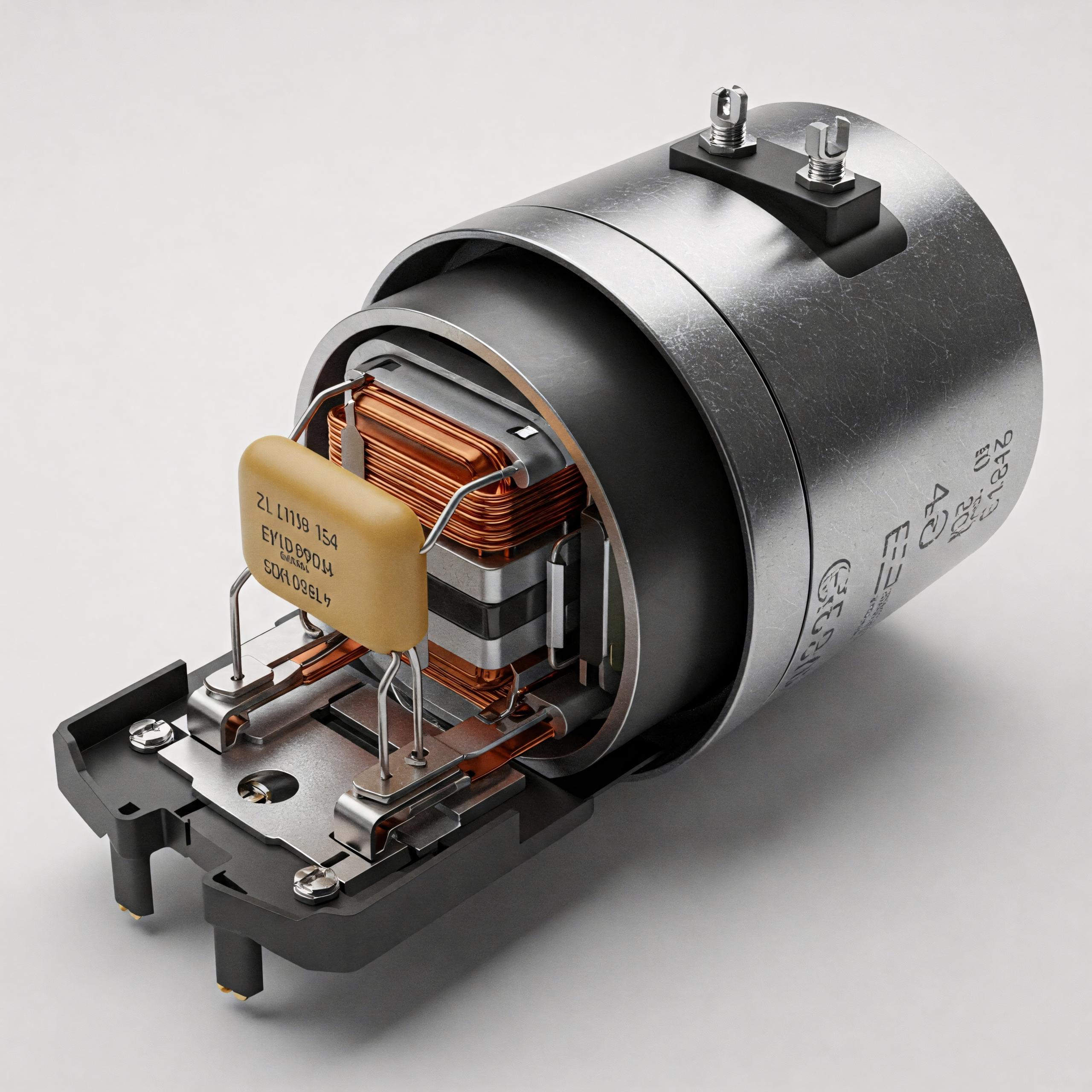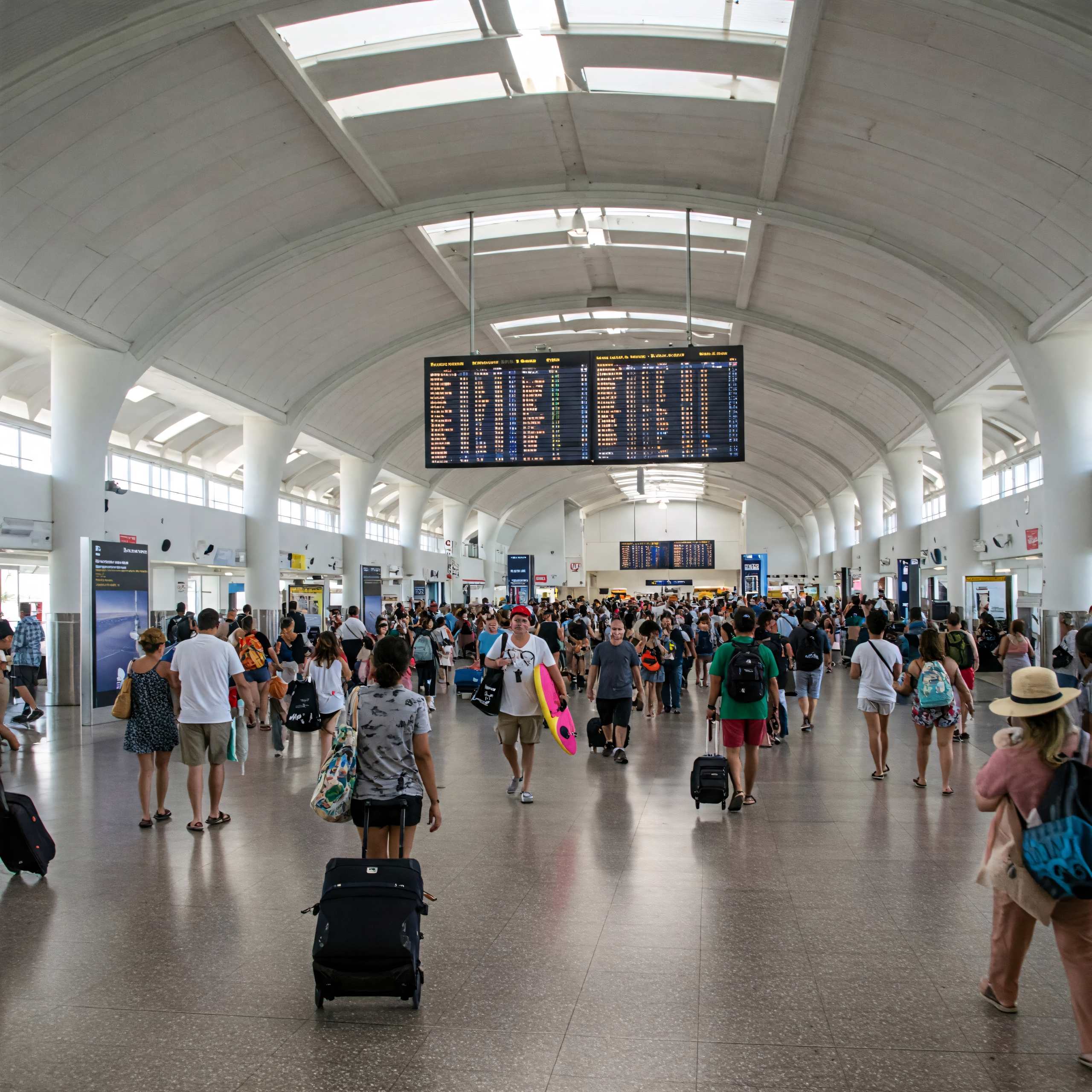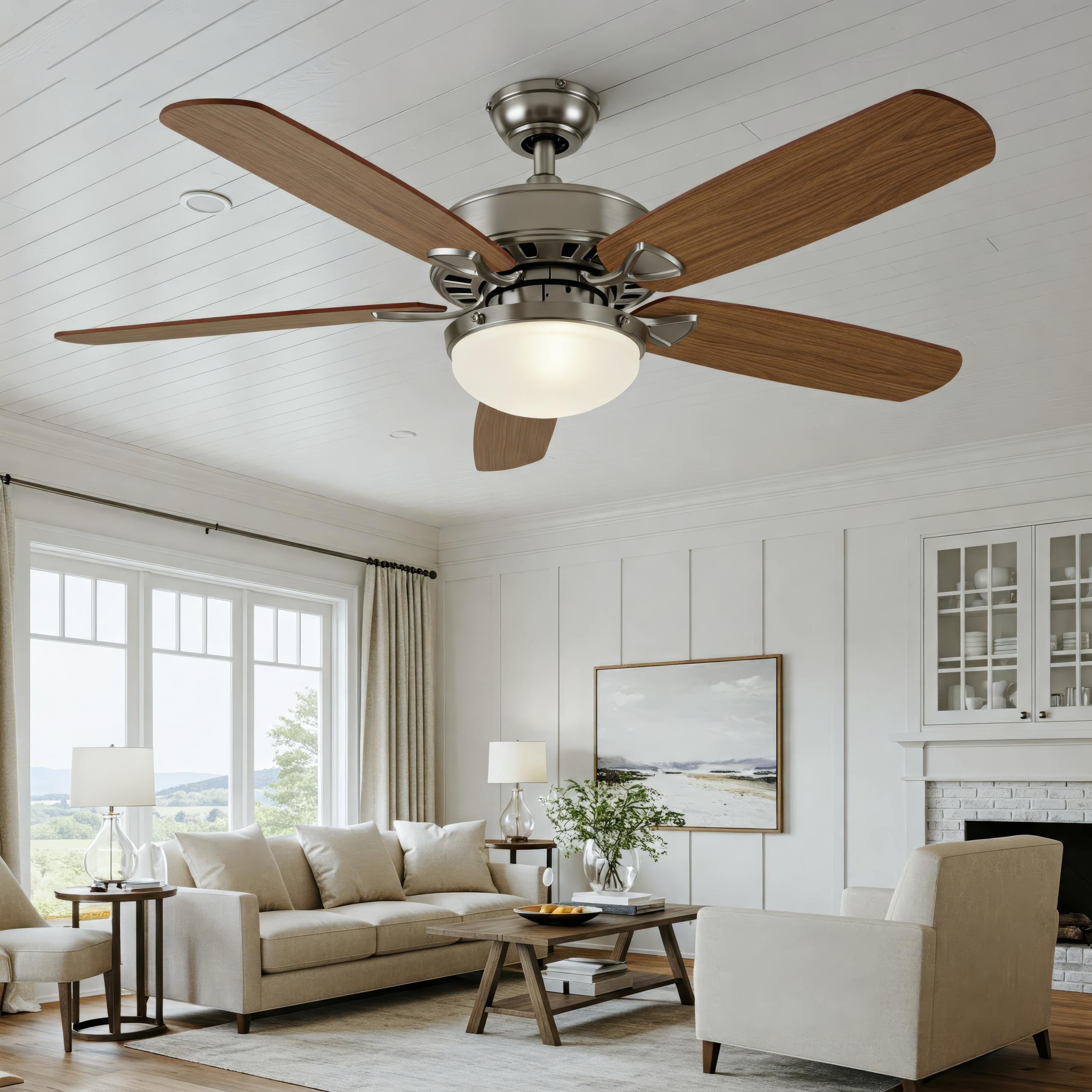Is your AC short-cycling, cooling inconsistently or not turning on at all? It may not be a problem with the main body of the AC unit, but a thermostat issue.
The thermostat is the control system of your HVAC system, communicating with your air conditioning and heating equipment to keep the indoor air at a comfortable temperature all year round.
Problems with thermostats can quickly affect comfort levels and usually require professional AC troubleshooting. You may need thermostat repairs or a replacement but how do you know if your thermostat is failing and whether it can be repaired? How long should a thermostat last?
Let’s get straight into the average life expectancy of a thermostat, what factors affect lifespan, and the tell-tale signs that your thermostat needs attention…
HOW LONG DO THERMOSTATS LAST?
How long a thermostat lasts depends mainly on the type and model of the thermostat, how often AC maintenance is performed, and the climate in your area (hot, humid climates are harder on all AC equipment). Older thermostat models used to last decades but modern, programmable, and smart thermostats usually have a lifespan of around 10-15 years.
We go into each of these factors—and how you can tell if your thermostat is failing—in more detail below…
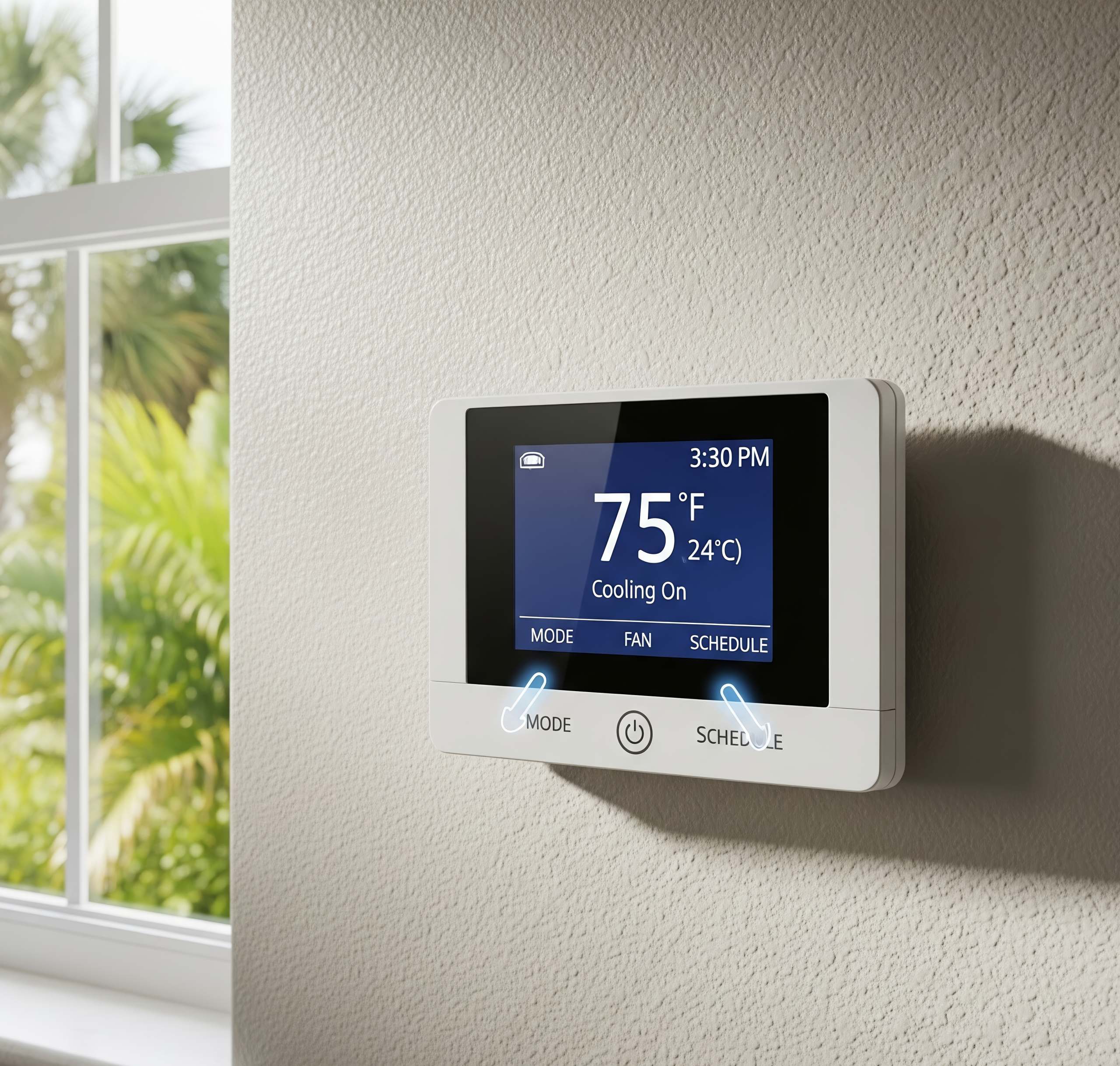
STAY COOL ALL YEAR ROUND WITH ONE WAY AIR…
The team at One Way Air installs, services, and repairs all types of air conditioning systems in Southwest Florida. Get in touch with us here for a quote or call 239-233-4356 in emergencies.
AVERAGE LIFESPAN OF A THERMOSTAT
Air conditioning units usually last an average of 15-20 years across the U.S. In Florida, the lifespan of all cooling equipment is shortened by the heat, humidity, and salt, so it’s closer to 10-15 years but this may be increased with regular AC maintenance.
Similar rules apply to thermostats. Most makes and models of modern thermostats will last 10-15 years with regular AC maintenance—but other factors do come into play.
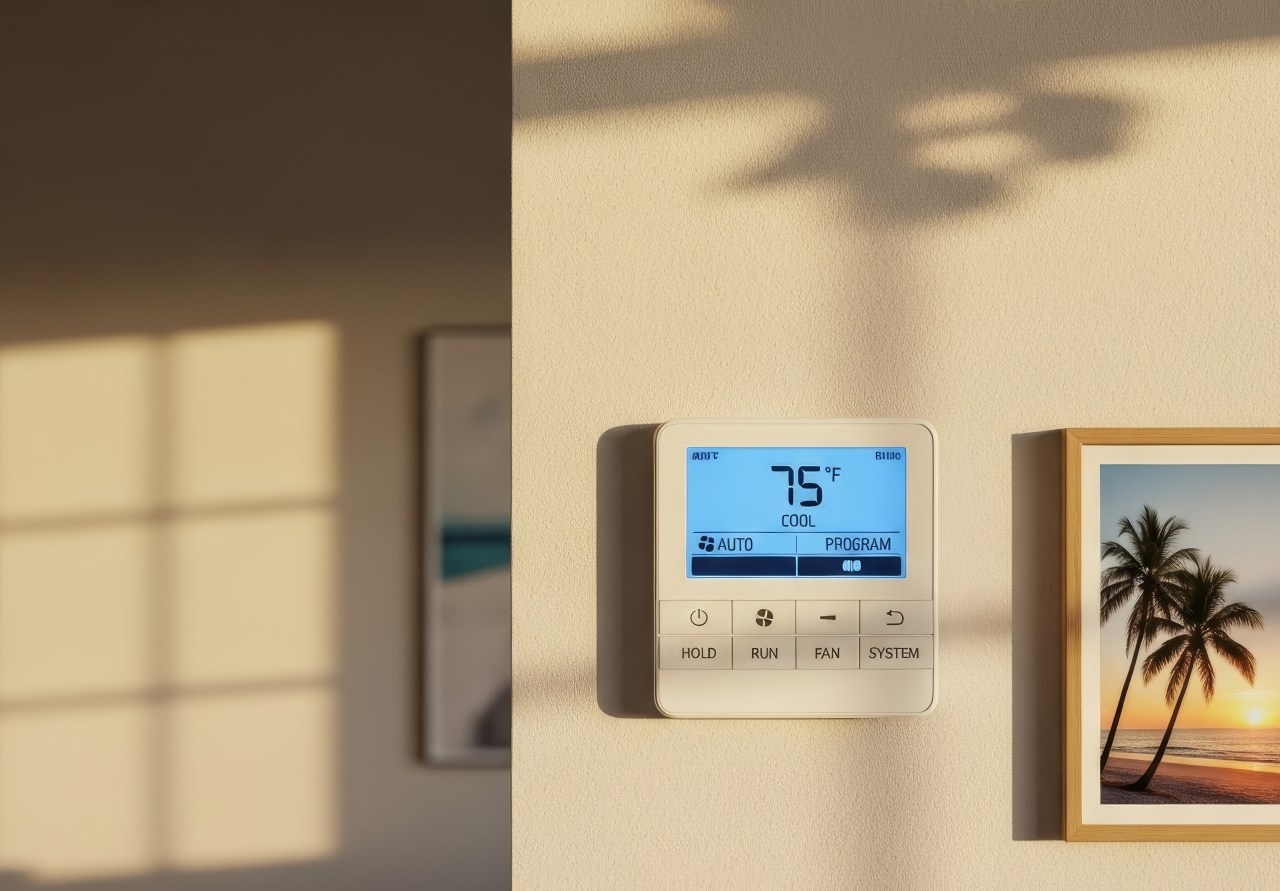
FACTORS AFFECTING THE LIFESPAN OF A THERMOSTAT
The following factors can all affect how long a thermostat lasts:
- Climate: Heat and humidity can negatively impact electronics, as does salt.
- Type of thermostat: Manual, analog thermostats often last longer than modern programmable or smart thermostats (more about this below).
- Brand and build-quality: Some brands like Honeywell, Nest, Trane, and Carrier are trusted to last longer than cheaper makes.
- Installation quality: A professionally installed AC unit and thermostat will usually last longer than a system installed by DIY or an inexperienced handyman.
- Frequency of usage: How often the AC is used affects the lifespan of a thermostat—here in Florida, we tend to use our AC systems more than most of the country, shortening the lifespan.
- Frequency of maintenance: Frequently inspected and serviced AC systems naturally last longer than neglected systems.

THERMOSTAT TYPES AND TYPICAL LIFESPANS
When you program a thermostat, it sends a signal to the HVAC system to raise or lower the temperature in the home. All thermostats work according to this basic principle but there are different types available, affecting how long they last.
So, let’s quickly look at the different thermostat options available for homeowners:
MANUAL (NON-PROGRAMMABLE) THERMOSTATS
These are basic, low-cost, old-style, manual thermostats with simple mechanical or digital controls. Despite their limitations, they are reliable and long-lasting, with fewer components to fail, typically lasting 15-20 years or more.
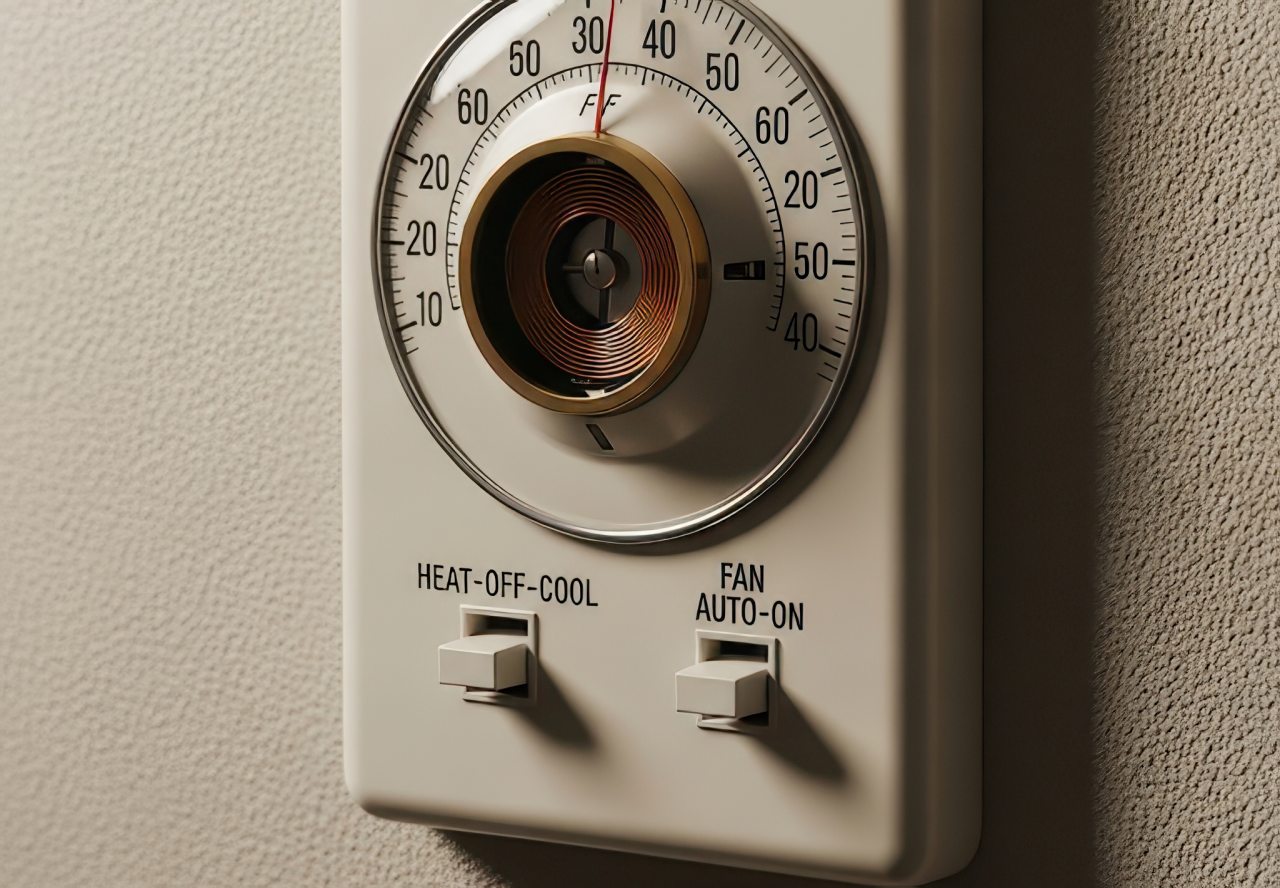
PROGRAMMABLE THERMOSTATS
Programmable thermostats allow temperature schedules to be set, based on time of day or day of the week, etc. This can be more economical, reducing energy usage and cooling bills in hot climates like SW Florida, while raising comfort levels. These thermostats typically last 8-12 years.
SMART THERMOSTATS
Smart thermostats are increasingly used in new AC installations. They are Wi-Fi-enabled, can be accessed through apps from anywhere, and feature adaptive learning for user habits, adjusting automatically and providing energy usage reports. Though they have higher upfront costs, smart thermostats can save on energy bills. The downside is that they may only last around 7–10 years, due to software and hardware obsolescence.
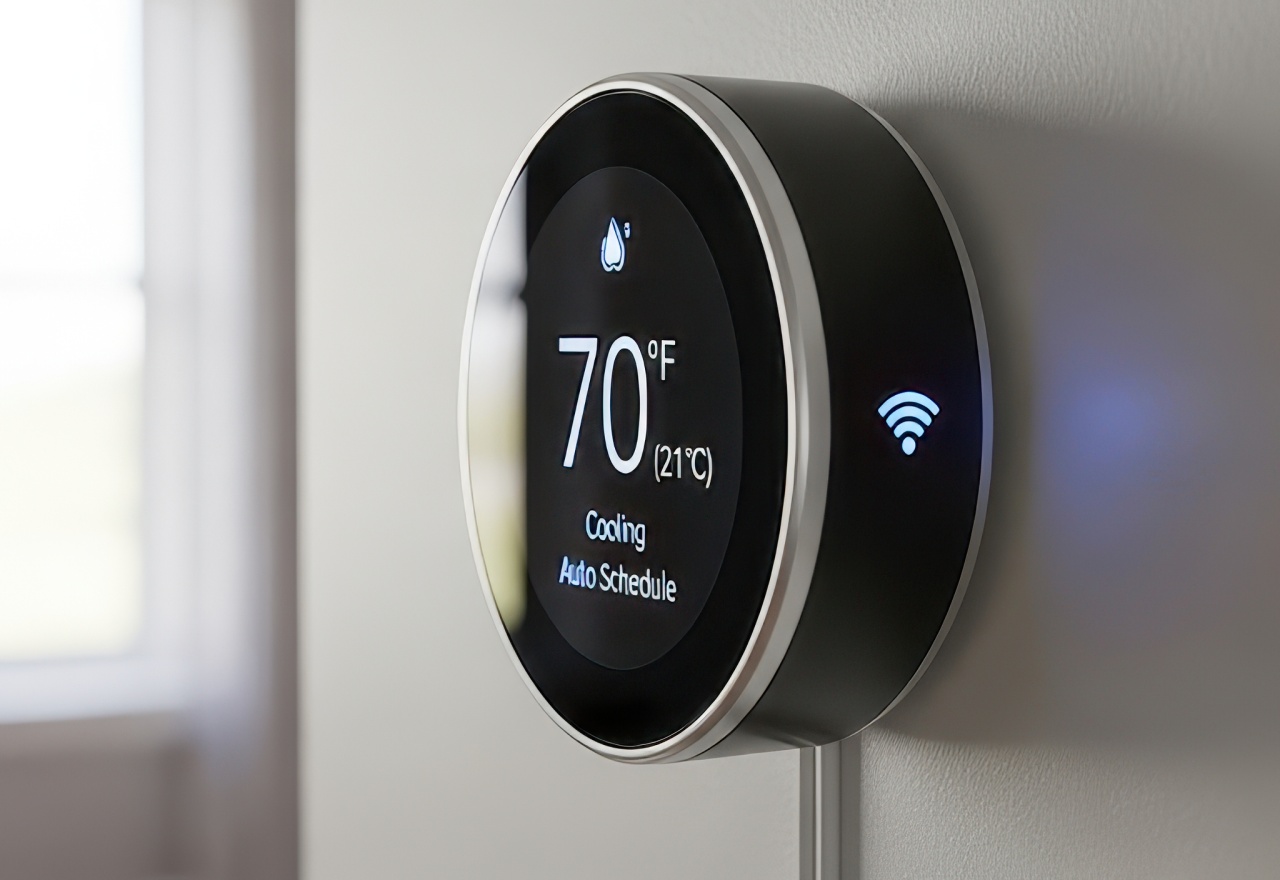
ZONED THERMOSTATS
Zoned thermostats are designed to work with multi-zone HVAC systems, which customize the temperature for each zone and control energy usage. Some, but not all, smart thermostats can do this but they must be wired into each zone’s control panel. These efficient thermostats typically last 10–12 years but cost more to install.
HUMIDITY-CONTROL THERMOSTATS
In Florida’s climate, it’s often necessary to lower humidity in the home to keep the indoor air comfortable. Humidity-control thermostats control both temperature and indoor humidity, integrating with whole-home dehumidifiers to boost comfort and reduce the risks associated with high humidity. These thermostats typically last 8-12 years but are, again, more expensive to install (more about thermostat costs below).
|
TYPE |
SCHEDULING |
LEARNING |
COST |
LIFESPAN |
|---|---|---|---|---|
|
Manual |
❌ |
❌ |
Low |
15-20 years |
|
Programmable |
✅ |
❌ |
Moderate |
8-12 years |
|
Smart |
✅ |
✅ |
High |
7-10 years |
|
Zoned |
Varies |
Varies |
High |
10-12 years |
|
Humidity Control |
✅ |
Varies |
High |
8-12 years |
HOW DO YOU KNOW IF YOUR THERMOSTAT IS FAILING?
Ideally, you only replace your thermostat when you upgrade your entire AC system—for instance, switching from an old, failing unit to a more efficient two-stage air conditioner or two-stage heat pump.
However, if it’s been a decade or more since you changed your thermostat and you haven’t scheduled regular HVAC maintenance in that time, your thermostat could be an “accident waiting to happen.”
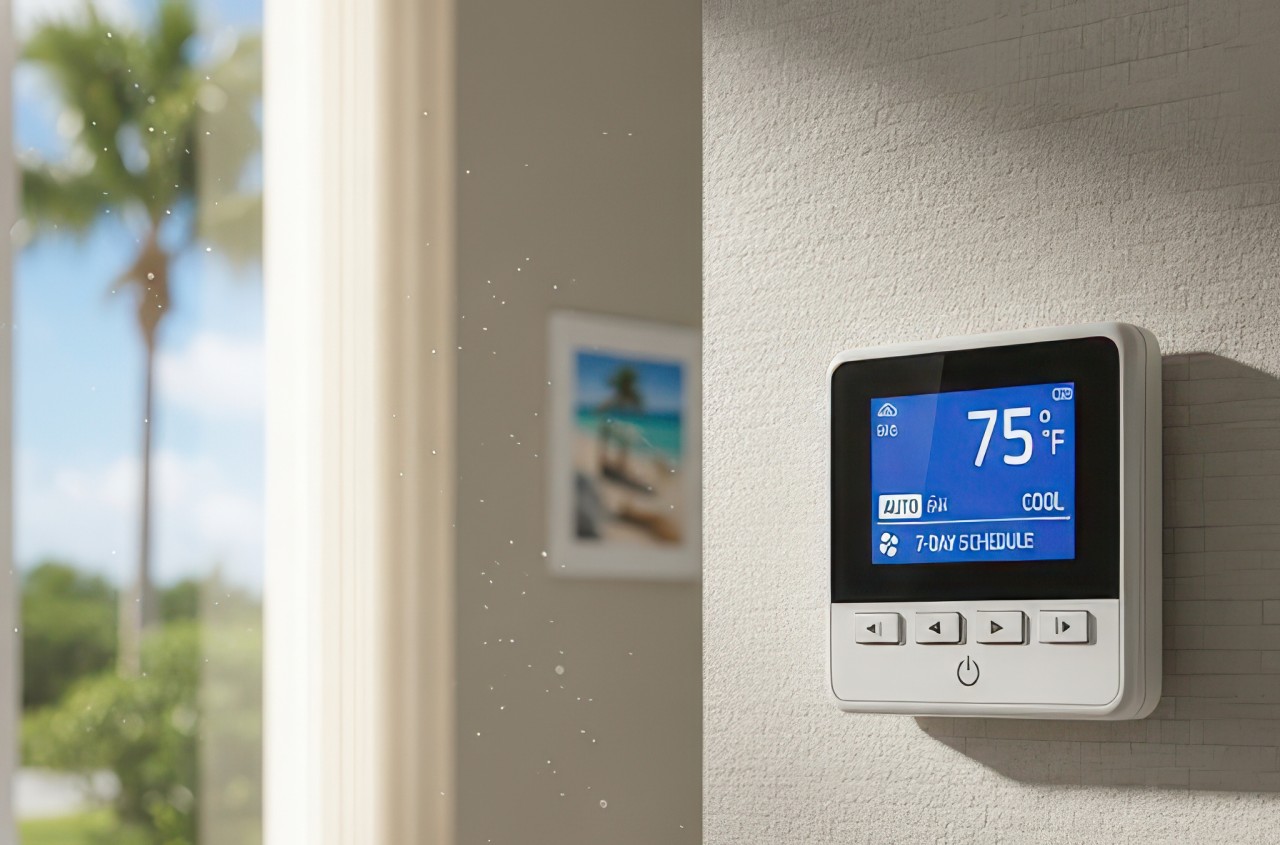
Old, manual thermostats should probably be upgraded to programmable or smart thermostats sooner rather than later for better control over indoor air quality/temperature and energy usage.
Following are some tell-tale signs that your thermostat is failing and needs replacing, starting with some obvious signs and moving onto some more subtle indications…
UNRESPONSIVE CONTROLS OR BLANK SCREEN
If the thermostat is “on the blink”, it may have a blank screen or unresponsive controls. Replacement batteries may be required in newer thermostats (older thermostats are often hardwired into the HVAC system)—or a more serious issue may require a replacement thermostat.
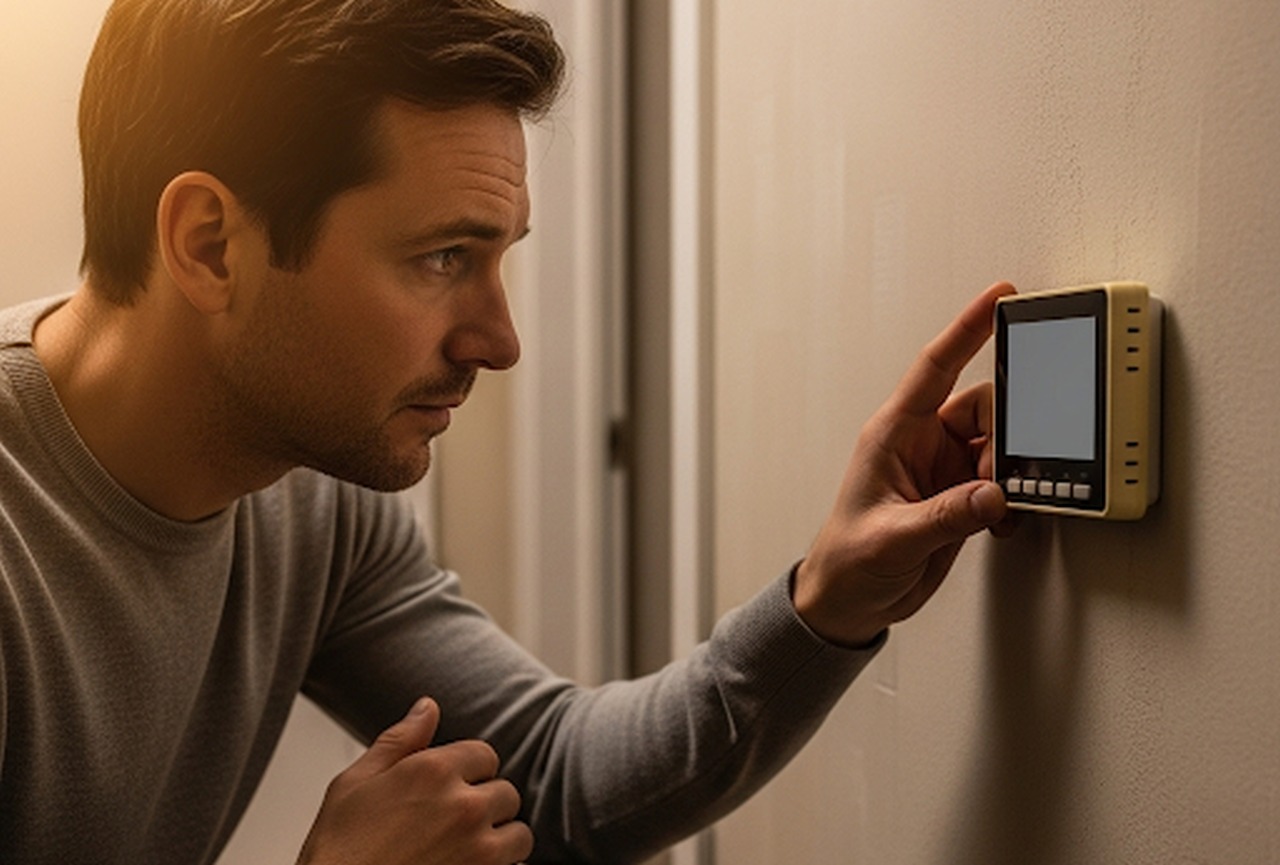
INCONSISTENT TEMPERATURES OR FREQUENT CYCLING
If your thermostat is failing, it may start to affect cooling, leading to inconsistent temperatures in the home. That’s often the first sign that something’s wrong—you start sweating or shivering.
Fluctuating temperatures may be due to short-cycling, i.e., the AC unit turns on and off frequently. This is a classic indication that the thermostat has a problem and is not communicating the correct information to the AC unit.
UNEXPLAINED HIGHER ENERGY BILLS
Higher-than-usual energy bills without a good reason are a sure sign that something’s wrong with the AC. In Florida, HVAC can account for more than 40 percent of the monthly energy bill, so it pays to fix AC problems quickly.
If your thermostat is not measuring the indoor temperature correctly or is not communicating properly with the AC unit, the air conditioning system may overwork, leading to inflated energy bills. This needs professional troubleshooting.

NO RESPONSE TO SETTINGS CHANGES
If you change the settings but the cooling system doesn’t respond and you don’t hear clicks coming from the thermostat, it’s a sign that it may be time to replace the thermostat because it’s not communicating the settings changes correctly.
HVAC SYSTEM NOT TURNING ON/OFF
If your HVAC system is not turning on, the issue may be related to an old or malfunctioning thermostat, with a faulty relay switch, wiring issue or motherboard problem. If the AC system is not switching off, that could also be a thermostat problem. Either way, get it looked at as soon as possible.
SETTINGS NOT SAVING
Have you got a programmable thermostat that’s not saving the settings you program? This is a problem as the whole point of a programmable thermostat is to pre-set instructions for heating and cooling the home efficiently. Consider a replacement if it’s an older model that’s starting to play up.
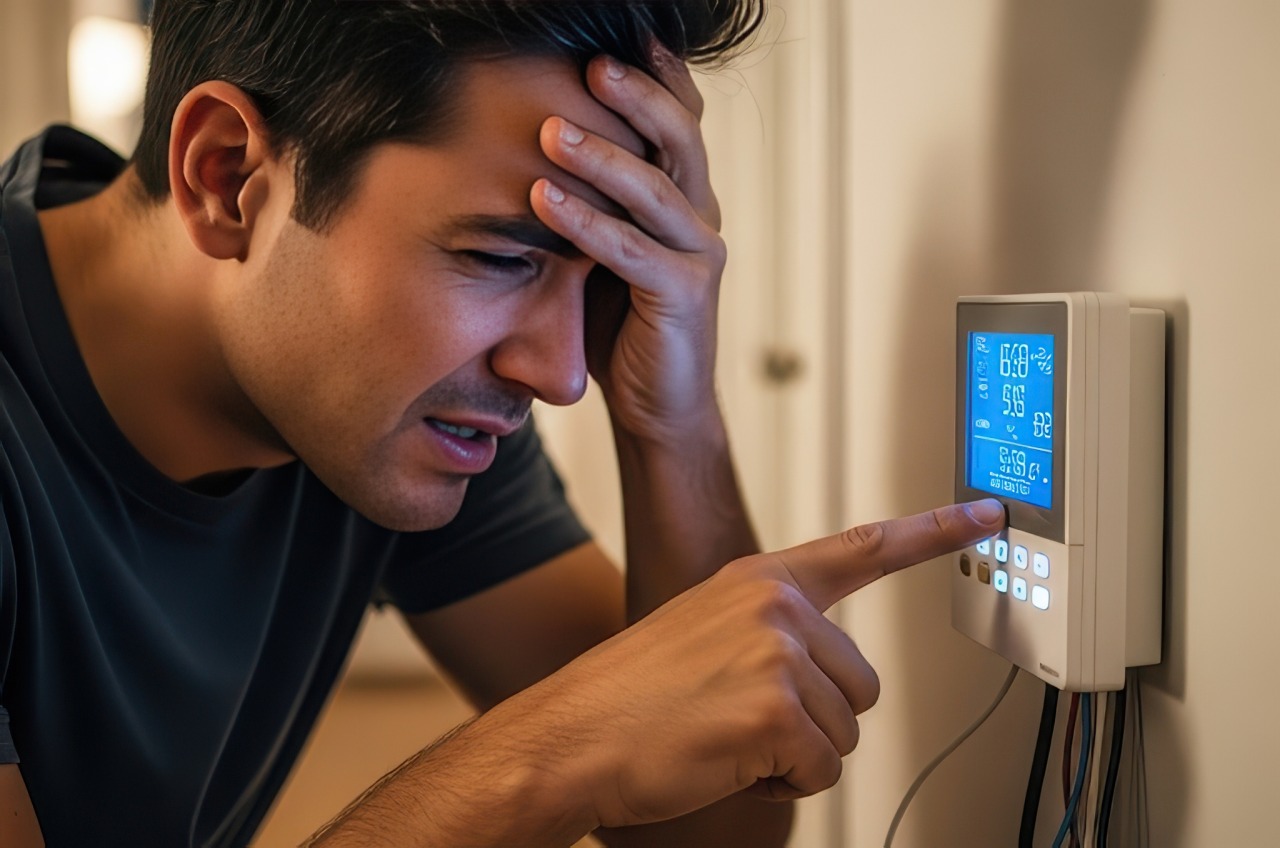
CAN I CHECK THE THERMOSTAT MYSELF?
Thermostats often need professional troubleshooting but there are some simple checks and fixes that you can do yourself. These include:
- Is the thermostat in the right location in your home? A poorly placed thermostat (exposed to direct sunlight or drafts, for instance) will send false readings to the HVAC equipment. Ideally, the thermostat should be located out of direct sunlight and drafts, near the center of the home. If not, it will need a professional reinstall.
- Check the thermostat display. If it’s dead and changing the battery doesn’t bring it back to life, you likely need a replacement.
- Check that the circuit breaker hasn’t tripped and that the HVAC system is not “offline”.
- Adjust the thermostat at least five degrees above or below the current room temperature. You should hear a click from the thermostat as the HVAC system fires up—if not, something’s wrong.
- If you suspect that your thermostat is measuring the indoor temperature inaccurately, use a hand-held thermometer and check the air temperature in the room to see if it matches the thermostat temperature.
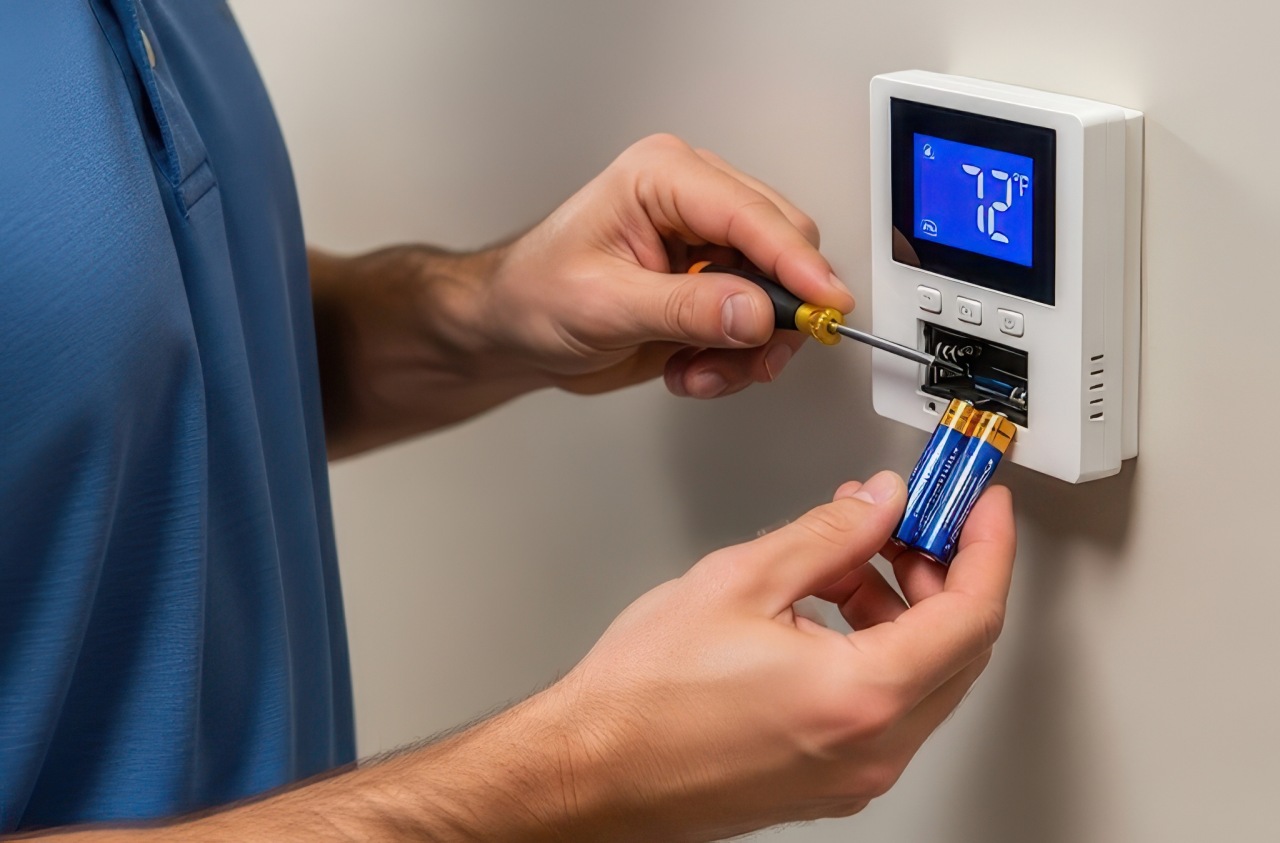
If in any doubt about the cause of the malfunction, call a professional HVAC technician for an inspection and troubleshooting. It could be loose, faulty or corroded wiring or it might simply need replacing.
REPAIR VS. REPLACE A THERMOSTAT?
Considering the cost of AC in Florida, the outlay on a new thermostat is generally a minor expense that can dramatically improve home comfort and efficiency.
New thermostats generally cost between $100 and $500. Here’s a summary of costs for installing various types:
|
TYPE OF THERMOSTAT |
AVERAGE COST (INSTALLED) |
|---|---|
|
Manual (analog, non‑programmable) |
$80 – $150 |
|
Non‑programmable electronic |
$100 – $200 |
|
Programmable digital thermostat |
$160 – $350 |
|
Smart (Wi‑Fi/learning) thermostat |
$200 – $500 |
|
Multi‑zone system (per additional zone) |
+$100 – $300 per zone |
|
Humidity‑enabled thermostat |
$200 – $500 |
Despite the generally manageable costs of a new thermostat, repairing faulty wiring or another minor thermostat issue may make economic sense with relatively new models.
The golden rule? If an aging thermostat is causing you problems, upgrading to a new one can save you a lot of headaches!
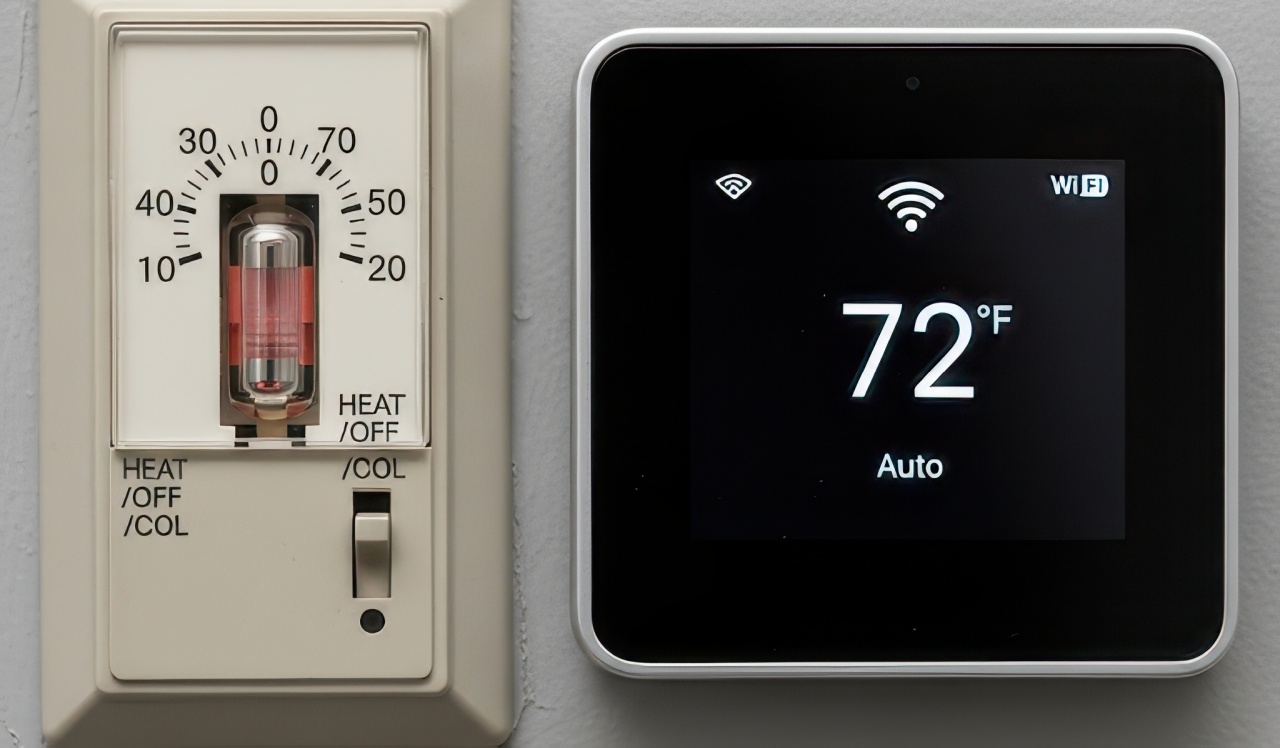
BENEFITS OF UPGRADING YOUR THERMOSTAT
Let’s summarize the benefits of upgrading from an older thermostat to a new model:
- More consistent temperature control for improved comfort levels.
- Fewer cooling issues and AC repairs are required.
- Improved energy efficiency and lower electric bills.
- Remote access and smart home integration via apps and Wi-Fi.
- Rebates or incentives may be available in Florida for energy-efficient upgrades (federal tax credits may be available, as well as local utilities companies offering rebates for ENERGY STAR-certified smart thermostats, for instance).
- Better humidity control with some thermostats.
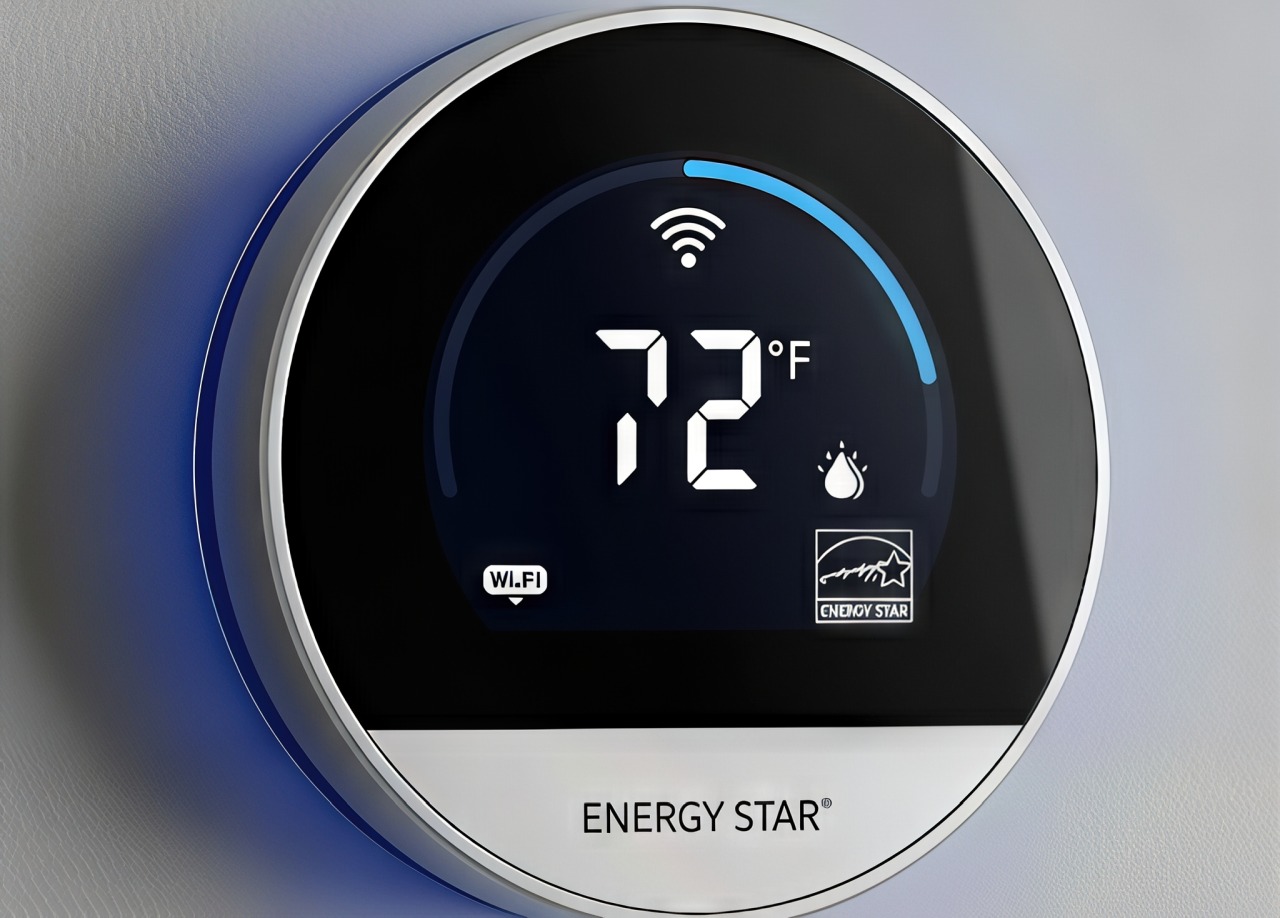
FAQs
Yes, a professional, licensed HVAC technician or qualified electrician must install an HVAC thermostat in Florida. Because thermostats are considered part of HVAC or low‑voltage control wiring work, state law and building code say that such installations must be performed by a licensed HVAC contractor or an appliance technician working under their supervision.
Yes, a good test is to adjust the thermostat at least five degrees above or below the current room temperature. You should hear a click from the thermostat as the HVAC system fires up—if not, something’s wrong.
It is recommended that you schedule at least an annual AC maintenance call in Florida. Because we use our air conditioners so frequently, some homeowners book a tune-up every six months or so before and after the hottest months.
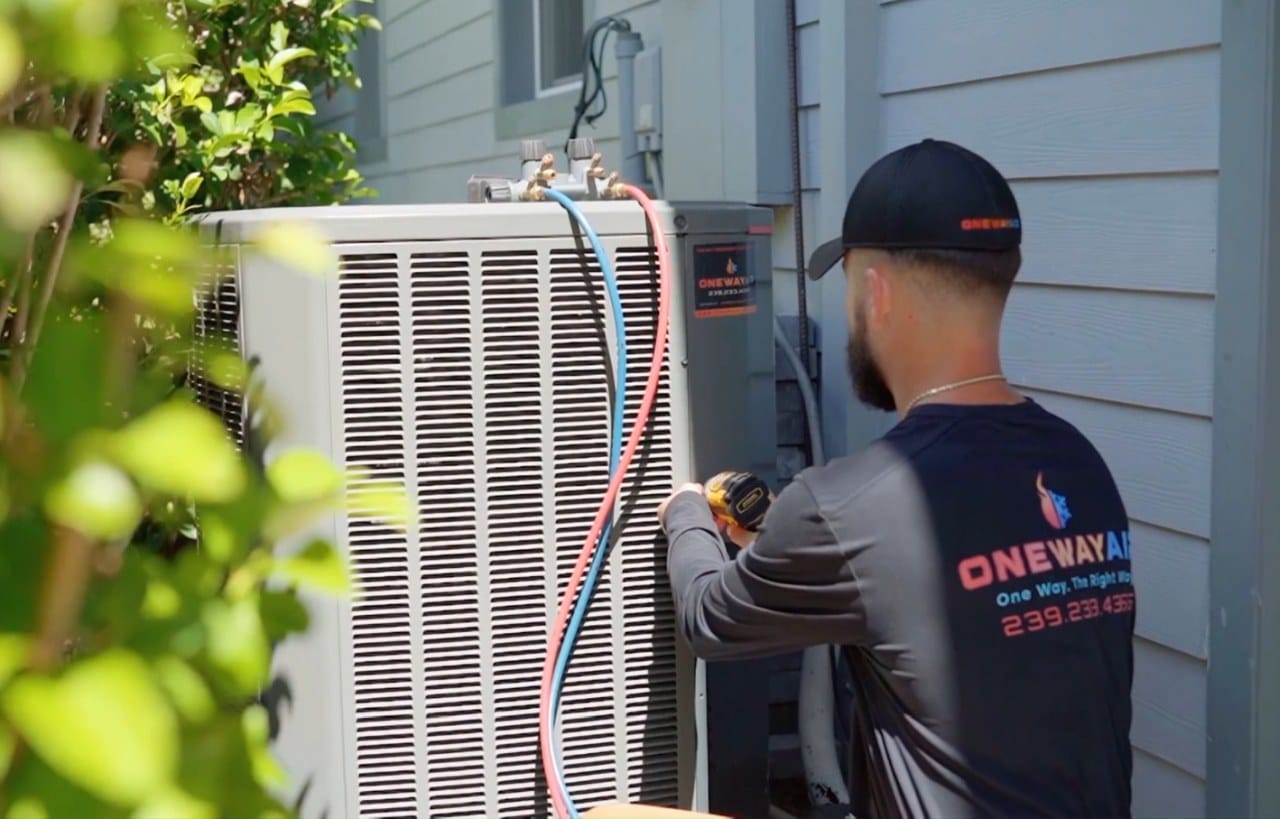
BEAT THE HEAT IN FLORIDA
For a small outlay, a new thermostat can help keep your home comfortable year-round while still saving money on energy costs—especially if your current model is over 10 years old and showing signs of acting up.
Our service technicians install, repair, and maintain all makes and models of air conditioners and thermostats. For expert advice and service in Southwest Florida, contact an AC professional at One Way Air for an inspection today.

